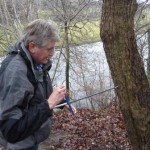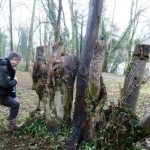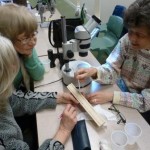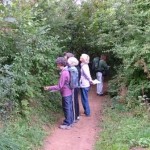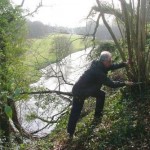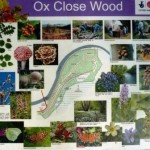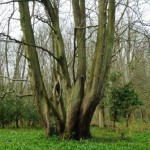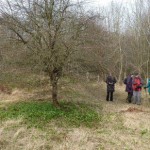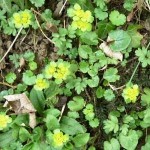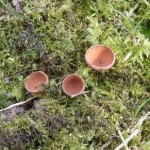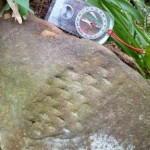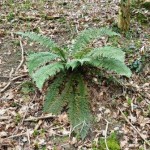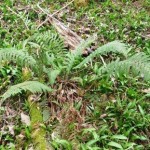Here are some samples of work, There is also a substantial article about archaeobotany on the Articles page.
(Below) Boston Spa in 2011, taking cores to date trees: in a cliff-top coppice, along a former laid hedge, now grown into an avenue of trees, by the old road to the ford in Holgate; counting tree rings shown in the core; hedge surveying in 2008 along the riverside path; and re-coppicing to open up views of the river.
(Below) Archaeobotanical walk on a Sunday morning in April 2013 to look at the trees, ground flora, geology and archaeology of Ox Close Wood, East Keswick. This is ancient woodland, parts of which may have been ploughed along strip-lynchets (still visible as terraces) in medieval times. There are a few veteran trees around 400 years old near the edges of the wood that have even branch distribution around their trunks, suggesting that they did not grow hemmed in by other trees. The woodland no doubt has a long and interesting history, and is now sensitively managed by the East Keswick Wildlife Trust.
The rich and varied ground flora has many plants that are interesting and rare today, including some that are recognised indicators of ancient woodland, especially on the steeper, more difficult to cultivate slopes near the river that would have remained undisturbed even if other parts of the woodland had been felled in the past. The underlying geology is a mixture of sandstone and magnesian limestone, which also add to the woodland’s variety and interest.
